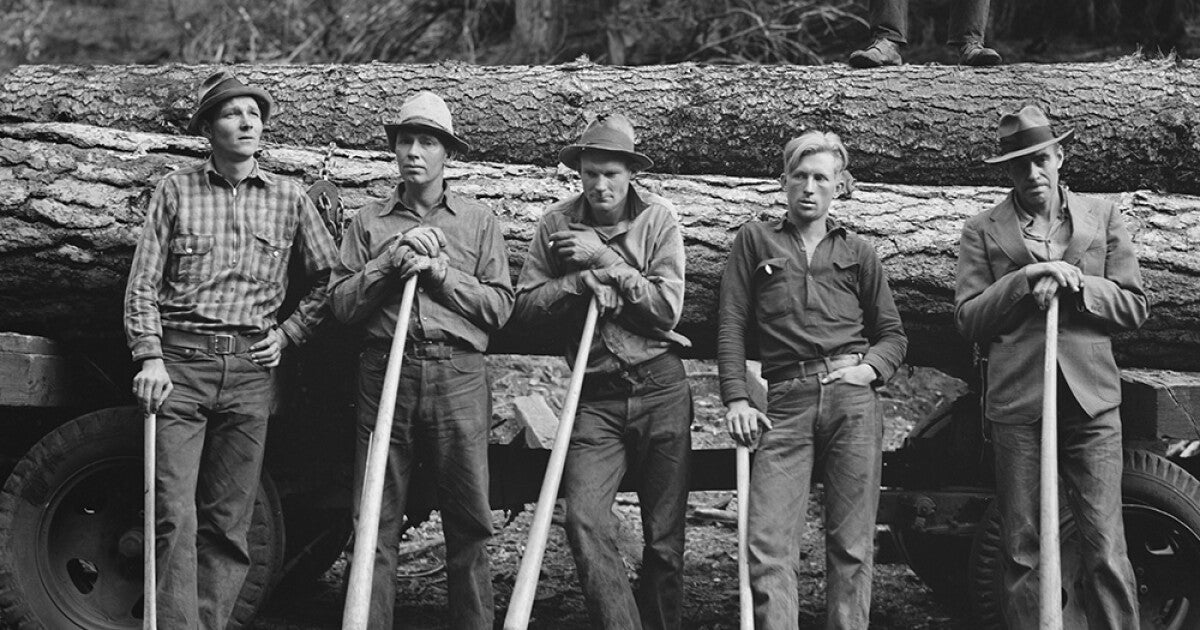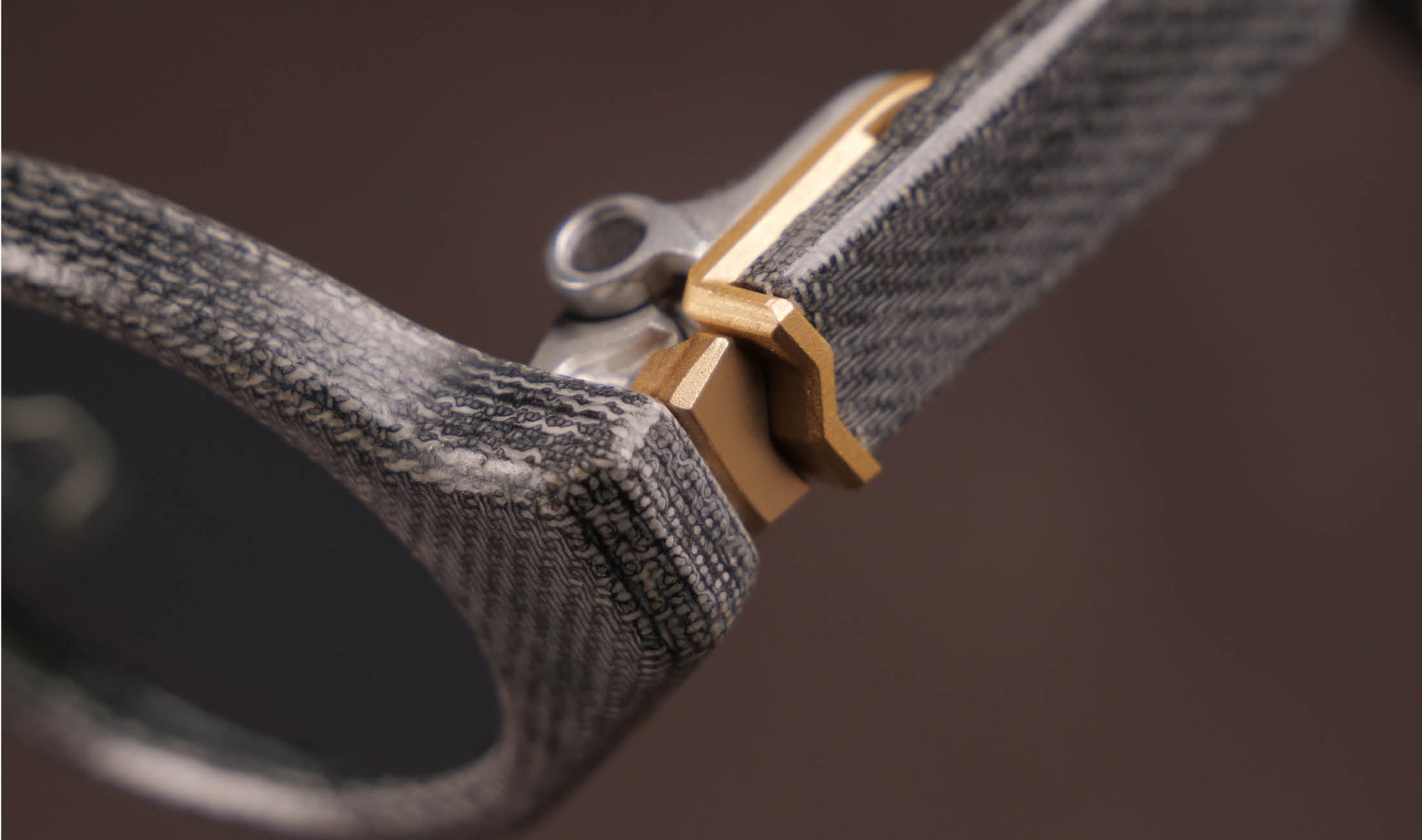
Journal 20 - The Californian gold rush, cow boys and Mosevic...
By Mosevic Eyewear
You might be wondering how all three parts of this journal title relate to one another, and you'd be right to ask, because just a few weeks ago I would have been wondering the exact same thing! If you'd like to find out give this article a quick read...you never know you might have just solved an answer at your next pub quiz!
Denim jeans have a long standing history across the world and have become a practical piece of clothing that a large majority of the world seem to be unable to live without. You have the likes of Justin Timberlake and Britney Spears making a fashion statement dressed in triple denim (a go to celebrity fancy dress party look!), Calvin Klein making denim sexy through their underwear ads, and then Levi's who need little introduction in the denim world.

So lets take it back to the start and find out where this wonder material found its roots and how the growth of denim became so popular that we decided to make a product out of it!
It is widely known that denim was invented in France, and more specifically in the City of Nîmes. Nîmes was a city that was economically booming at the end of the 17th Century and this was largely due to the textile industry specifically specialising in silk. From here there is evidence that a fabric made of a silk and wool combination was exported across Europe going by the name of 'Serge de Nîmes', in English this is where the word Denim is thought to have come from. However to add some confusion to the matter an Italian fustain (which is a strong Cotton and Linen/Wool fabric) went by the name of Jean (not to be confused with jeans as we know them!) and was a very similar material to the denim from Nîmes. Apart from the different materials used there is one distinct difference between denim and jean. Denim was woven using a white thread and a coloured thread, whereas Jean used two threads of the same colour. Our frames have an intricate pattern detail around the edges where the white thread of the denim come through the material.
So why were these thick robust materials so popular? The early uses of denim were for workwear due to the robustness of the material. History notes that Loeb Stratuss (who changed his name to Levi...do you see where I'm heading?) was large in the Denim movement and the uses we know it for today. Following his move to San Francisco to benefit from the goldrush, he started up his own dry goods company and sold supplies to the miners. In this time Jacob Davis purchased some denim strips from him to craft high strength trousers for his clients. The fabric kept falling apart at the seams, so like many creators he had to think of a way to make sure the fabric was firmly bound together, and this is when copper rivets on denim jeans first came around.

Just like the trousers Davis created, our handmade denim frames also have metal elements to hold the fabric together. Copper as used by Davis is a chemical element which is malleable, whereas the brass that we use on our frames is an alloy of both copper and zinc which creates a harder material. The brass element of our frames is visually appealing, and I think it would be fair to say the copper rivets on denim jeans are also visually appealing. A pair of denim jeans without rivets might look rather odd.

As with a lot of things creating designs and making a product can be costly. Davis was unable to afford the patent on this design so therefore he and Stratuss teamed up and took the patent out together.

The design had various iterations along the way (along with all documents being lost in the 1906 San Francisco earthquake and fire) once the design was perfected the popularity grew and by the 1920s were leading the way in men's workwear. I wonder if they ever thought frames would have been made in this same material over 100 years later?
After Levis death in 1902 the business was handed down to his four nephews. Following their takeover was a time when demand for waist overalls increased and this meant the brothers needed to source their denim elsewhere. The company looked for new suppliers and by 1915 most of their denim was coming from Cone Mills in North Carolina. In the years to follow denim products were becoming a leading part of men's workwear in the Western states, by the 1930s Cowboys and Western Films were a big influence in the purchasing of denim clothing. The denim overalls were only sold West of the Mississippi, this created a demand for those in the east, in response to this they would head to ranches in western regions and often purchase their first pair of Levis. This helped spread the Western influence across the states and eventually oversea.

1940s brought with it a time of reduced production due to raw materials being needed for wartime efforts. Societal change after the war meant that denim was less associated with workwear, and more with leisure activities, it was also the first time that Levi Stratuss and Co sold its products nationally. Over this time products were changed due to the demand of non-westerners being different (we here at Mosevic know that there is no pleasing everyone!). Even though still vastly popular, with popular American singers such as Bing Crosby being a Levis fan, there was still an attitude that denim was only appropriate for hard labour. We think this is rather fitting due to the fact that we indeed picked Denim as our material of choice for frames due to its hard wearing capabilities.

As the years progressed through the 1960’s, 70’s and 80’s the popularity of denim only grew more. These were the decades when flared jeans became a pinnacle of fashion, denim skirts were created and still to this day are a summer staple here in the UK and all in all denim became more acceptable to wear outside of the factory.

Now you may be thinking, wasn’t this article meant to be about denim the fabric? Why have you spoken so much about denim jeans? And I think its pretty clear now that without the creation and growth of denim jeans the material itself may not have been as popular as it is today. Without it our lovely handmade denim frames might not even exist, or they may well have been made of a different material all together! (Jack is working on that so keep your eyes peeled for some of his future creations!). Denim itself is so versatile, especially when it can be worn on the eyes and the thighs!
Catch you next week-ish!

